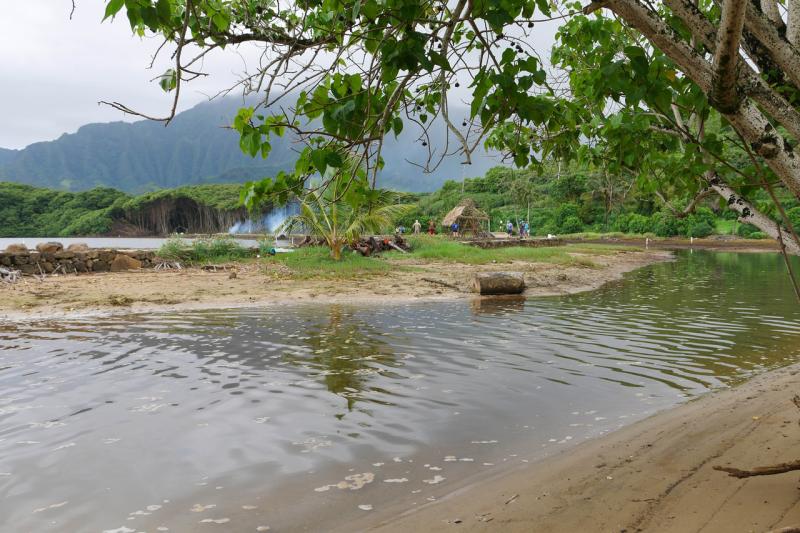Hawaiians know fresh-grown seafood has been a staple of our ancestors’ food supply since well before the United States became a country. This beautiful fish pond full of hatchery-born mullets is just one way folks are tapping into cultural wisdom in hopes of improving our nation’s healthy food supply in the future.
“Locally grown seafood in waters around the nation is critical for environmental responsibility, food security, and a stronger economy,” says Michael Rubino, NOAA’s Senior Advisor for Seafood Strategy. “With the population growing fast, expanding our nation’s seafood production is really a gift for our children and grandchildren. It’s the responsible thing to do.”
The history of growing fish in nearby waters dates back hundreds of years, if not thousands. In Hawaii, 488 fishponds once dotted the islands to provide a reliable staple of a healthy diet. We can step into this piece of the past at the 800-year-old Paepae o Heeia fish pond, one of just 50 such ponds still in use today. The pond currently sells nutritious whole fish directly to the community. The nearby Kualoa Farm grows oysters in constructed ponds carbon-dated between 800 and 1,000 years old. Super fresh oysters are one of the delicacies locals and tourists alike enjoy.

These ponds are part of a push to raise more fish and shellfish around the islands for cultural reasons, as well as to feed a hungry wave of tourists who visit each year. The locally-grown food promotes health and environmental responsibility. It’s also a source of food security in an area nearly 4,000 miles from the U.S. mainland. But experts say expanding pond production is just a first step.
Oceanic Institute of Hawai’i Pacific University, just a short drive away, is researching cutting-edge technology to support sustainable aquaculture. The institute notes a wealth of untapped potential, both off Hawaii’s coast and around the nation.

“For domestic aquaculture to expand, science-based approaches need to be developed and implemented to compete with cheap imported seafood,” said Dr. Shaun Moss, the Oceanic Institute’s Executive Director. “By using advanced technologies, the U.S. aquaculture industry should be able to replace a significant portion of foreign imports to provide American consumers with high-quality aquatic protein in a sustainable manner.”
In 1990, the institute partnered with the University of Arizona to develop the world’s first captive population of disease-free Pacific white shrimp. The institute then transferred the selectively-bred shrimp to the private sector, hoping folks in Hawaii might purchase some to mate and grow in shrimp ponds. Hawaii is now home to several of these commercial suppliers, which generated an estimated $40 million in export revenue in 2015. In fact, shrimp broodstock were the top edible export from Hawaii in 2014 and 2015. Shrimp broodstock from Hawaii are sold largely to commercial shrimp hatcheries in Asia. Hawaii’s Department of Agriculture says the state exported more than 467,000 shrimp to Asia in 2018 at approximately $50/shrimp.

“Right now, we’re sending jobs overseas and importing at least 85 percent of our seafood. About half of that is farmed, just not here. It doesn’t make sense for the economy or the environment,” said Rubino. “The good news is we have the know-how now to grow our seafood here. And seafood farming is one of the most sustainable ways to answer the demand for locally-grown protein.”
Fish create a smaller carbon footprint than other popular protein sources and require less feed input per pound produced. With ever-improving technology and the correct farm placement, we can grow a lot of seafood in a small amount of space. New and expanded seafood farming operations in an area about the size of Washington, DC would produce another $6 billion in seafood. With ever more people to feed and wild fish populations stable, expanding what we grow is necessary.
It’s also healthy. Seafood is a low-calorie source of protein rich in heart-healthy omega-3 fatty acids, vitamins, and minerals. The U.S. departments of Health and Human Services and Agriculture jointly publish federal guidelines that recommend Americans nearly double their seafood consumption. So dig in and eat more fish!
